Introduction
When working with pesticides, protecting oneself from possible exposure is of upmost importance; and the easiest way to do this is by the proper use of reliable personal protective equipment (PPE). Furthermore, protecting hands and forearms with properly fitting gloves should be our highest priority since these areas are the most at risk for pesticide exposure. Hands are used for all sorts of other activities including eating, touching other parts of the body, and touching other pieces of equipment. Thus, keeping them clean from pesticides is critically important. This publication is intended for those who use pesticides and want to know the different types of gloves, how to find the correct fit, and how to best use and maintain those gloves.
Types of Gloves
Materials
Gloves can be made from a variety of materials, all of which have specific uses and offer distinct levels of protection. Not all types of gloves are the same, and some would not be appropriate for protection from chemical exposure (pesticides). Cotton gloves may be comfortable and helpful against scratches while harvesting crops but provide no protection against chemicals. To protect from pesticides, one should wear chemical-resistant gloves—not gloves simply labeled “waterproof” nor those made from or lined with absorbent materials. Chemical resistant gloves are made from many different materials (Table 1), each of which has pros and cons. For example, barrier laminate provides high levels of protection but might not provide enough dexterity to perform fine tasks. Therefore, it is important to consult the label before applying pesticides to ensure that the proper gloves are available for use and that they allow you the ability to easily perform the task(s) at hand.
Table 1. Materials used for chemical resistant gloves.
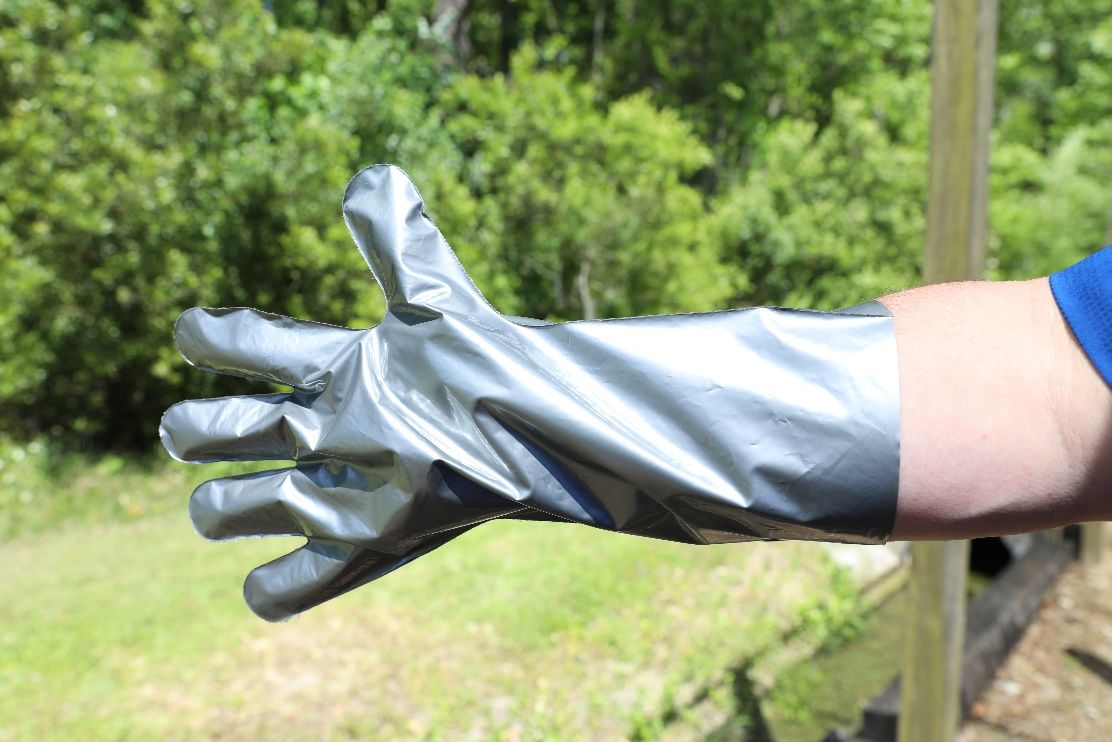
Credit: Christine Krebs, UF/IFAS
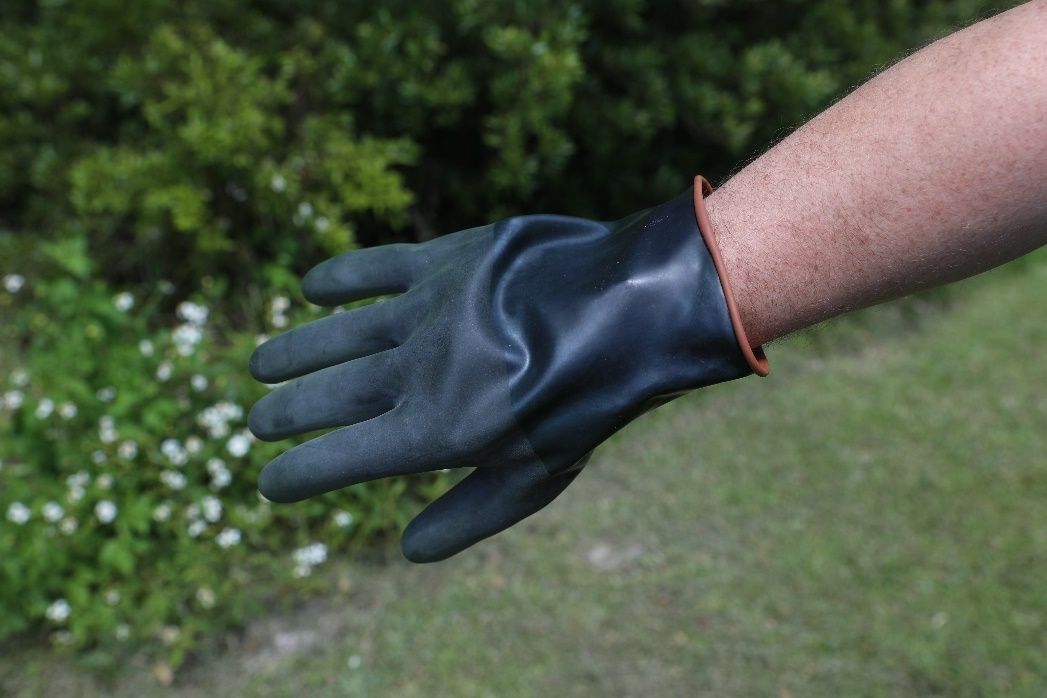
Credit: Christine Krebs, UF/IFAS
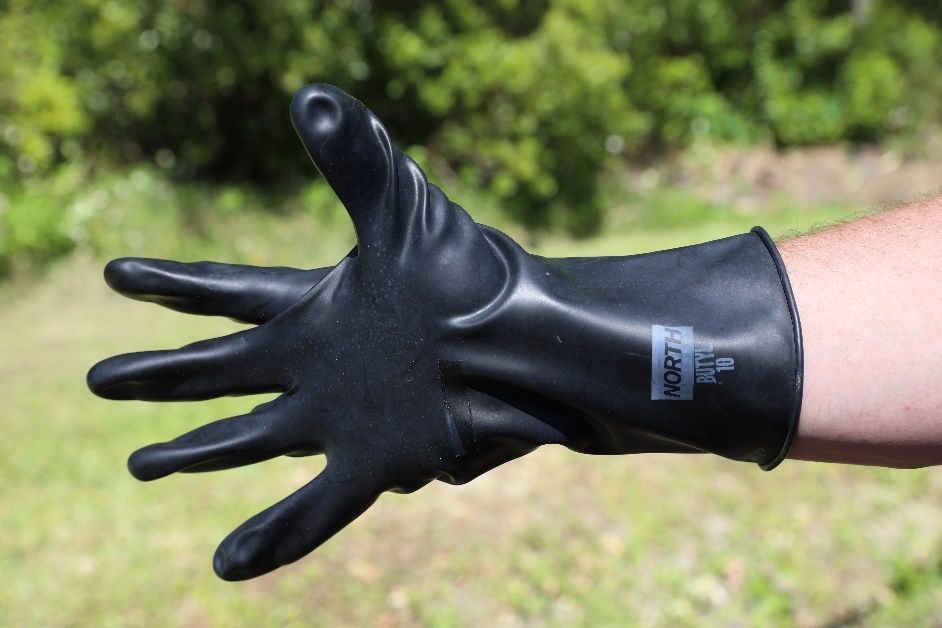
Credit: Christine Krebs, UF/IFAS
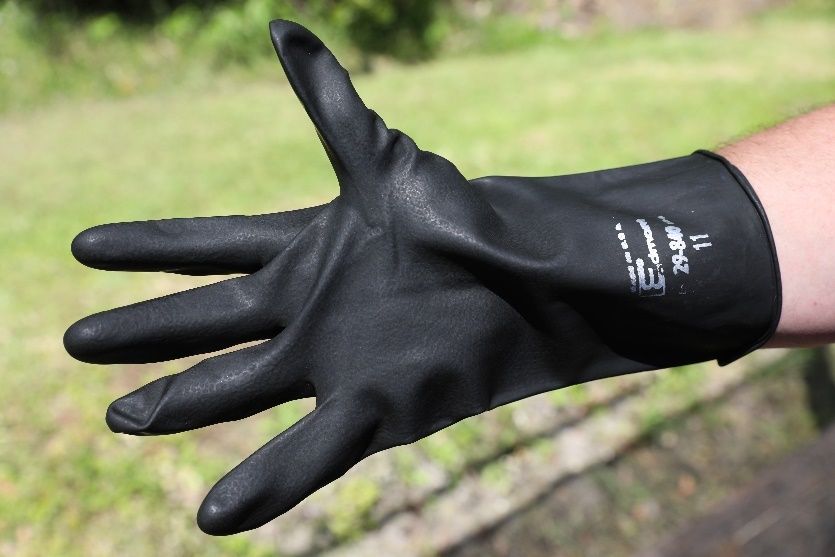
Credit: Christine Krebs, UF/IFAS
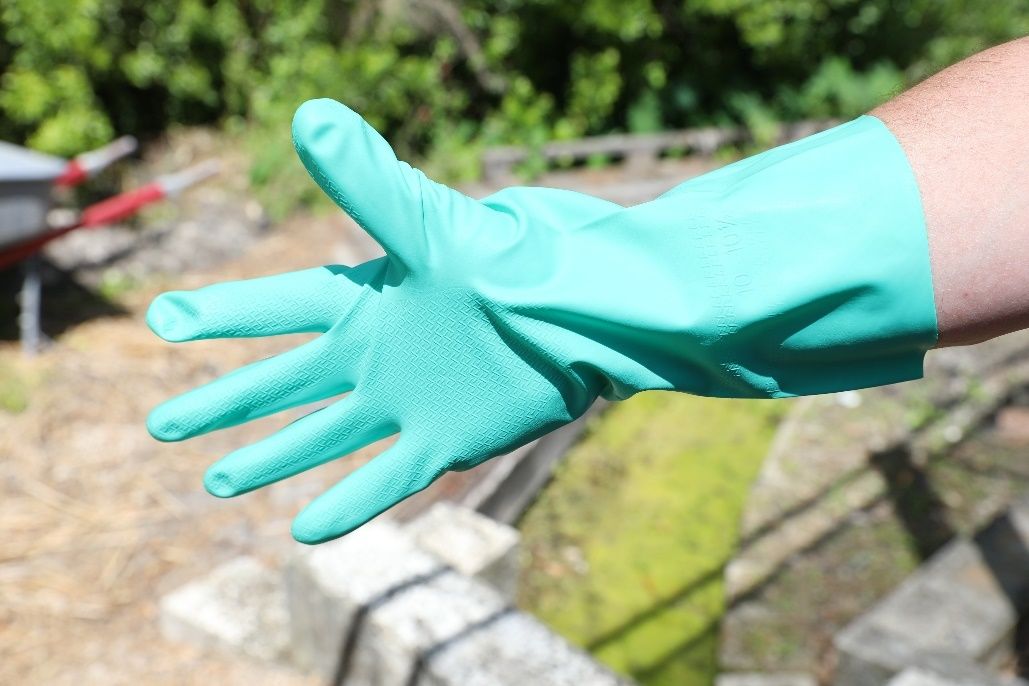
Credit: Christine Krebs, UF/IFAS
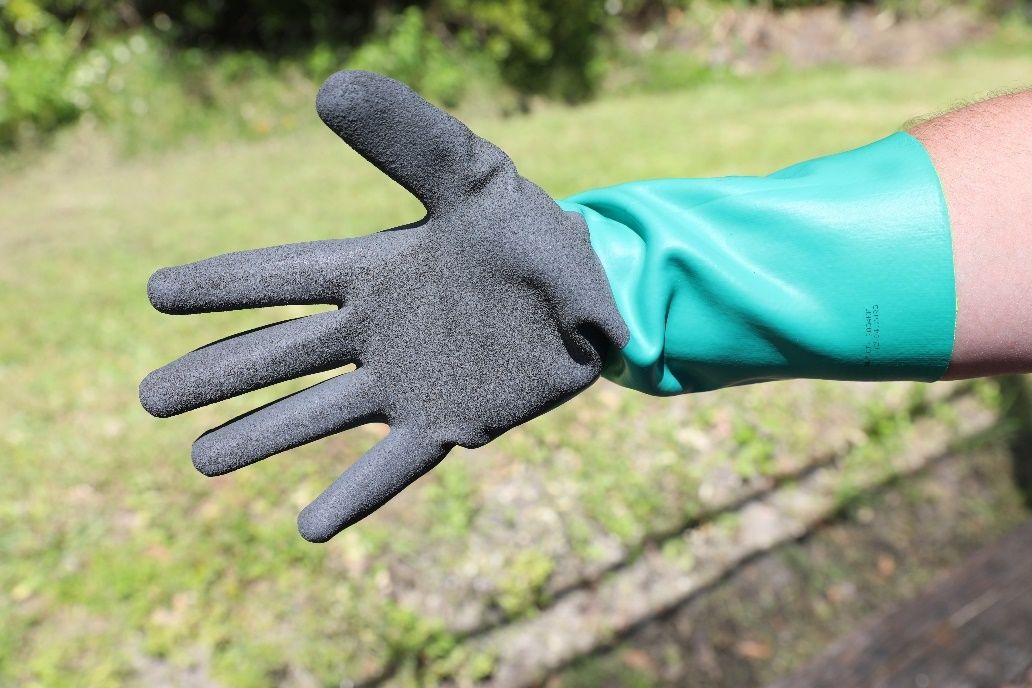
Credit: Christine Krebs, UF/IFAS
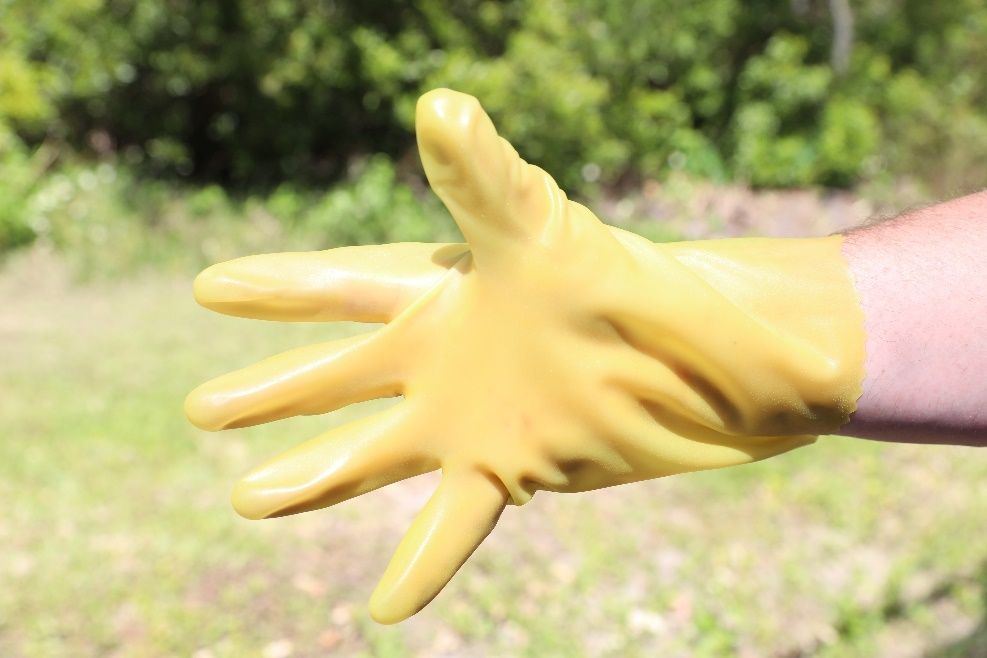
Credit: Christine Krebs, UF/IFAS
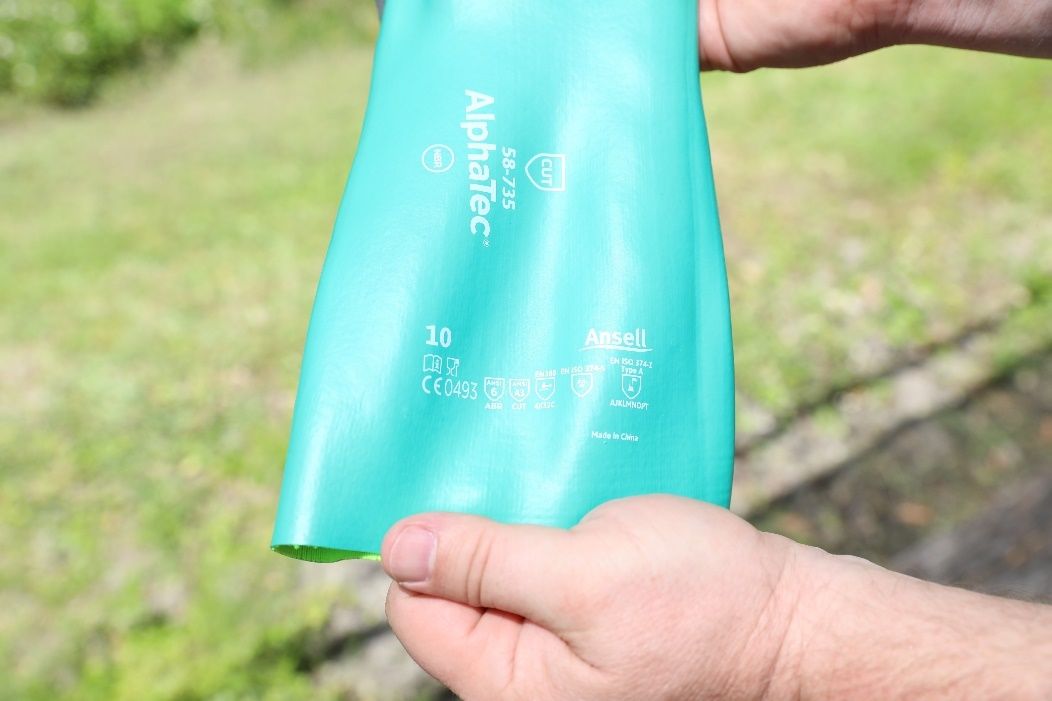
Credit: Christine Krebs, UF/IFAS
Sizing
Having gloves that properly fit your hand is critical for both protection and comfort. Gloves that are too tight can rip when taken on/off and reduce dexterity and blood flow to the fingers. Alternatively, gloves that are too loose can cause chaffing or even fall off while in use. Trying on various sizes in the style of glove you will wear most often can help determine the best size. Gloves will either be labeled with a number for sizing (6-13) and measured in millimeters, or more qualitatively with sizes from XS–XXL, as preferred by US manufacturers. To understand these sizes, you need to measure the circumference around the widest part of your palm. You can also measure the length of your hand from the tip of the middle finger to the bottom edge of the palm. Refer to Table 2 for guidance, but always check the manufacturer’s sizing guidelines for best fit.
Table 2. Glove size reference chart.
Additionally, gloves will be labeled by thickness. Though thicker gloves provide less dexterity, they are more resistant to tears and holes from wear. Thinner gloves may feel better on the hand but are more prone to damage. Gloves typically range from 4 mm–22 mm in thickness, and it is important to balance need for dexterity with length of protection. A job that requires you to wear gloves for long periods of time while using your hands might be better for thicker gloves. However, you must ALWAYS meet the minimum thickness that is specified on a pesticide label.
Use, Cleaning, and Maintenance
As always, the pesticide label specifies which gloves must be worn in its Precautionary Statements section, under the PPE subsection. The instructions may be as simple as “wear chemical-resistant gloves” or as specific as listing particular glove types. All instructions on material type and thickness provided on the label must be followed.
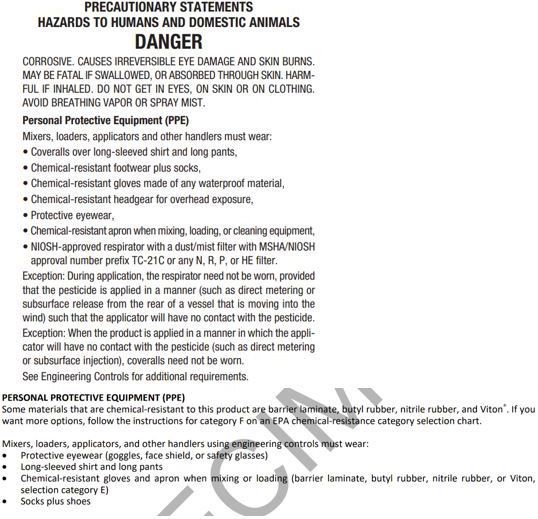
After the appropriate glove has been selected, workers must consider how to wear gloves to ensure their safety. One question that comes up often is whether long sleeves be tucked into the gloves, or should they go over the gloves? The answer to this question depends on the nature of the work and how exposure is likely to occur. In most cases, when spraying target pests below eye level, it is best to wear sleeves outside the gloves to prevent spray mix from entering the glove top and collecting around the fingers. Conversely, sleeves should be tucked into the gloves when you are working with pesticides overhead. This will prevent spray mix from running off the gloves and under the sleeve to bare skin. Always consider the job at hand and where exposure is most likely.
When a job requires chemical-resistant gloves, consider double-gloving. This is where you have a pair of disposable, exam-style gloves underneath your thicker gloves (Figure 10). This accomplishes two things: the tighter fitting under-glove helps alleviate chaffing and keep hands dry while the over-glove protects from any nicks or holes. Additionally, double-gloving helps with keeping hands clean when removing gloves after using pesticides.

Credit: Brett Bultemeier, UF/IFAS
Removing Gloves Safely
It is important to remember that when removing gloves, a single clean hand is often required to touch the contaminated glove; one could be exposed to harmful chemicals if they perform this routine without caution.
Therefore, if not double-gloving, the gloves should be washed with soap and water (when possible) before removing them. This will remove a great quantity of pesticide residue and reduce the likelihood of exposure. Next, simply grip the glove with one hand near the fingers and pull the glove partway off. Then use the glove that was loosened to grab the other glove. Do this back and forth, being sure to never touch the outside with bare skin, until they can slide off. Once removed, grasp them by the inside of the gloves at the wrist (Video 1).
Video 1. Proper glove removal. (See end of publication for video transcript.) https://youtu.be/qJGeQ3fRKNI?si=7hEgvxmgCKYXLN_V
Credit: Videography by Christine Krebs, communications manager, UF/IFAS Center for Aquatic and Invasive Plants; demonstration and voice by Brett W. Bultemeier, UF/IFAS
If you are wearing a 2nd set of gloves, remove those using the sterile glove techniques outlined in Figure 11. Always wash your hands with soap and water when done working with pesticides.
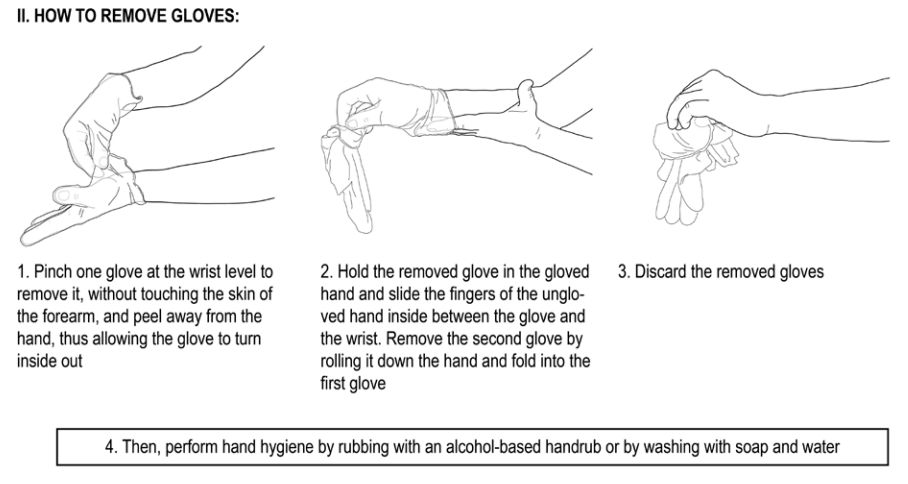
Credit: adapted from World Health Organization, 2009
Once your reusable gloves have been properly cleaned, they should either be discarded or stored in a dry, secure place. It is best to store gloves in a sealed container (or sealed bag)—labeled and stored separate from any pesticides. Do not store used gloves with new gloves, in case they still contain pesticide residue and could contaminate the fresh set. Avoid storing gloves where they will be exposed to direct sunlight, as this often makes them brittle and likely to rip. Always inspect gloves before and after use to check for holes or any signs of excessive wear. A great way to test for holes is to trap air in the gloves and squeeze them to ensure air is not escaping. If in doubt on the condition of a glove, throw it out.
Identifying, selecting, using, and maintaining gloves are some of the most important parts of pesticide safety. The hands and forearms are the most likely to be exposed to pesticides, so ensuring you have the right equipment is essential. Read the label, wear the proper gloves according to the label, and, for the job at hand, inspect and care for the gloves to greatly reduce your chance of exposure to pesticides. These practices will decrease your overall risk of contamination.
References
Environmental Protection Agency. 2016. “Chapter 10: Worker Protection Labeling.” In Label Review Manual. https://www.epa.gov/sites/default/files/2016-02/documents/chap-10-feb-2016.pdf
World Health Organization. 2009. “Glove Use Information Leaflet.” https://cdn.who.int/media/docs/default-source/integrated-health-services-(ihs)/infection-prevention-and-control/hand-hygiene/tools/glove-use-information-leaflet.pdf?sfvrsn=13670aa_10
Video 1 Transcript
Never use bare hands to touch what could be dirty gloves.
These gloves could be contaminated with pesticides, and now your clean hands are covered.
To properly remove reusable gloves, you'll want to use one glove to grip the fingers of the other. Slowly work your arms and fingers back and forth until they can be removed, and then you can grab the gloves from the inside.